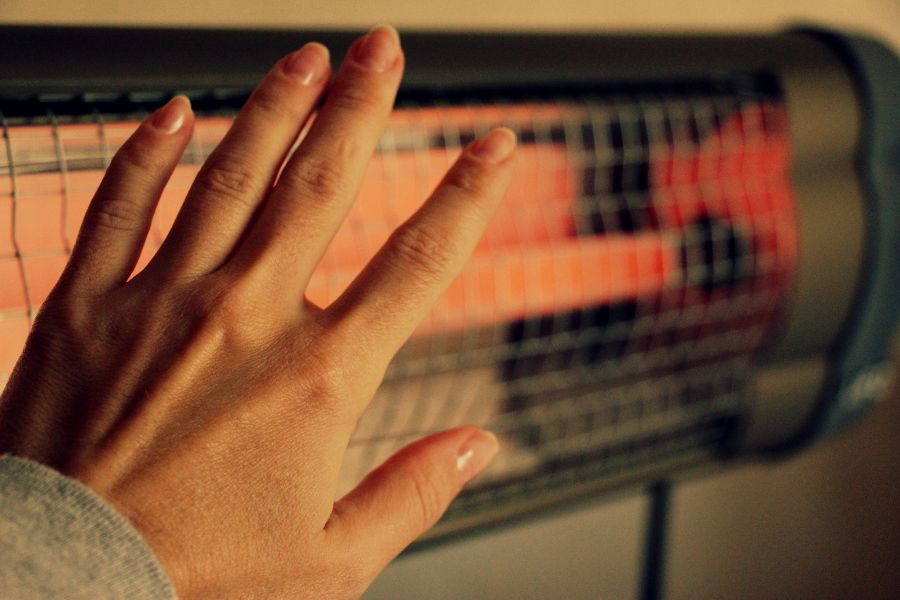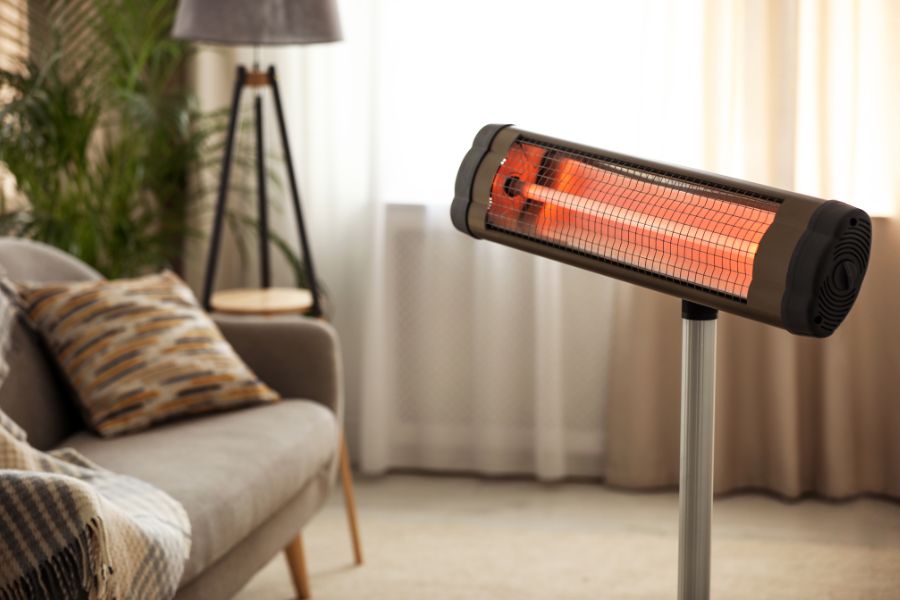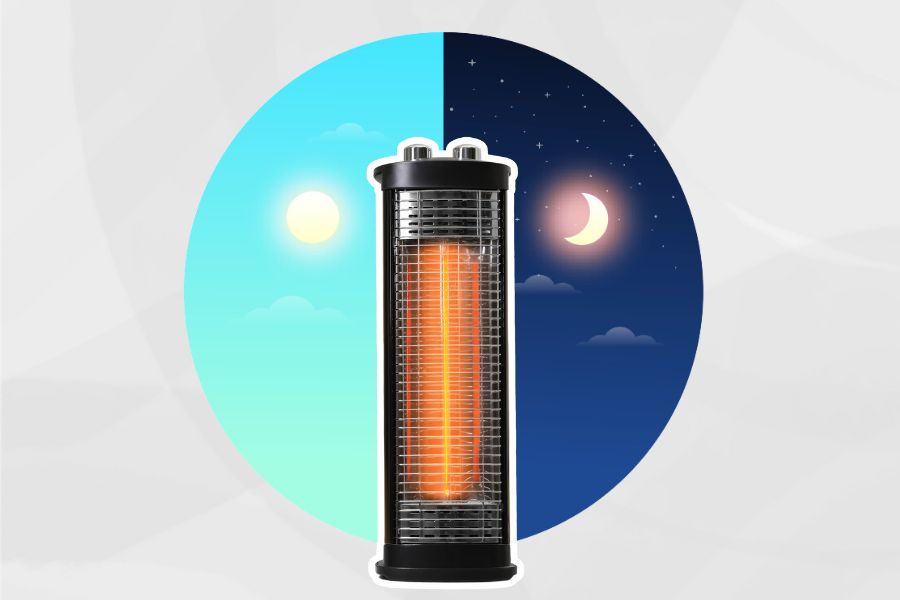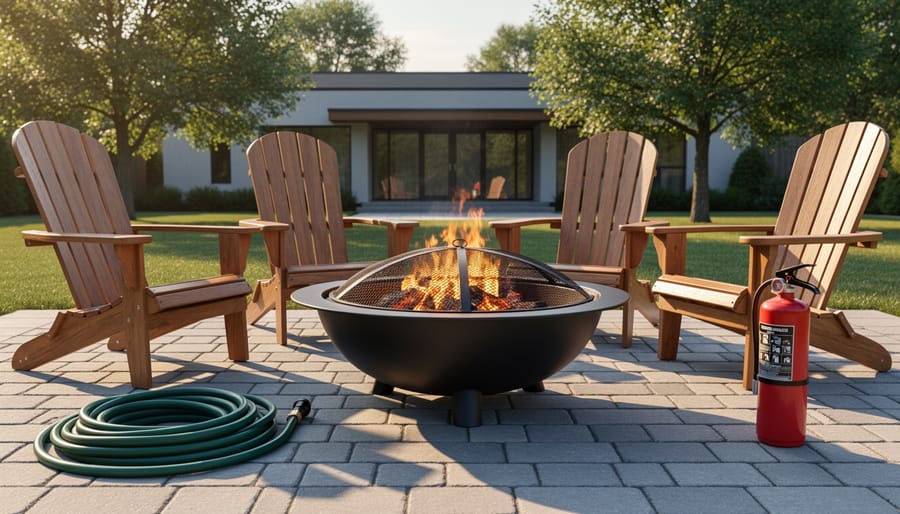Infrared heaters are very popular, but are they safe to leave on overnight?
The answer is yes, infrared heaters are a safe alternative to other types of heaters, but it’s helpful to understand what makes them different.
To make it easy, I put the information you need about infrared heaters right here, where you can learn what infrared heaters are, how they generate heat, and their uses in residential settings.
I also answer some common questions about this style of heater so you can make a smart choice when deciding if an infrared heater is right for you.
What Is an Infrared Heater?

An infrared heater is a device that creates a high temperature and then transfers that heat to other objects nearby that are of a lower temperature.
The transfer of heat comes through electromagnetic radiation, or in layman’s terms, an invisible wavelength. These wavelengths are not harmful to humans, animals, or furniture, but they do need to be near the objects you wish to warm up.
The premise behind infrared heating began in 1800 when scientist Sir William Herschel made a discovery while testing the radiant power of different wavelengths. He saw that radiation from the red light spectrum increases temperature more than other colors.
In the 1940s, infrared heating came into commercial use as a means to cure paint. It isn’t until recent times that using infrared technology for residential heating has caught on, with new developments and heater styles coming to market that increase efficiency, comfort, and safety.
Portable space heaters are great options, and many look at both infrared heaters or oil filled heaters to fill that need.
How Do Infrared Heaters Generate Heat?
Infrared heaters work by emitting an infrared light, which we cannot see. A series of wire coils inside the heater generates the light and then uses reflectors to aim the light waves outward.
Once the waves spread out, they hit your body (or other objects), where they absorb the heat that the infrared light creates. Think of it as the same feeling you get when sitting in the sun.
Depending on the style of the heater and the amount of radiation output, you can expect different intensities of heat. Whole-house infrared heaters typically utilize electric, propane, or natural gas as a fuel source.
Infrared Safety Questions Answered

Are Infrared Heaters Safe to Leave On Overnight?
Infrared heaters, even portable ones, should be safe to leave on overnight because most should have an auto-shut-off switch to turn off the unit if it overheats or falls over.
For portable units, it’s wise to refrain from unattended overnight use or use a model with a programmable timer that will shut down the unit after you fall asleep. If you run the heater overnight, ensure it’s clear of furniture, drapery, and walls, and nothing is sitting on the unit.
Professionally installed whole-house infrared heating systems should feature an array of safety mechanisms that run automatically for safe day or night operations.
What Precautions Should You Use When Using an Infrared Heater?
Infrared heaters need the same attention you would give any other type of heater for these issues:
- Watch for Burns: The front panels of infrared heaters can get hot, so look for a model with a cool-touch exterior or go with a wall-mount unit that sits out of reach.
- Check the Power Cord: Take the time to look for damage, wear, or even melting. If you see any of these issues, do not use the unit until it is professionally repaired.
- Avoid Tripping: Make sure the power cord won’t catch on feet, which can make a person fall or pull the heater over.
- Avoid Fires: While an infrared heater does not produce flames, it gets hot enough to set fire to flammable materials nearby, so take precautions to keep the immediate area free of such items.
- Install a Smoke Alarm: Make sure every room that you may use an infrared heater also has a working smoke detector, just in case a faulty electrical issue arises while the heater is left unattended.
- Follow Safety Recommendations: Use grounded outlets to avoid electrical overload of circuits. Make sure your unit has auto-shutoff and tip-over safety features, and lastly, make sure your model displays certification from a reputable safety association.
What Kind of Maintenance Is Recommended for These Heaters?
In general, infrared heaters require little maintenance aside from the occasional dusting.
You do need to check for loose or damaged wires or power cords. Check that vent pipes are free from debris build-up or blockages for permanently installed infrared heaters.
It’s smart to have a technician do a yearly maintenance and safety check on your infrared heater to catch potential problems and remove any build-up of carbon or scale on coils or deflectors.
Infrared heaters are popular in residential settings as portable space heaters to warm individual rooms inside the home. They are great alternatives to propane patio heaters for outdoor areas or porch spaces or for heat sources for home saunas and garage heaters.
Modern advancements in infrared heaters are expanding their use in whole-house heating systems. Using infrared heating is especially ideal for homeowners who suffer from allergy issues since they don’t kick up dust like traditional forced-air heating systems.
Homeowners are also finding that infrared heaters use up to 15 percent less heat load to warm the same amount of space over traditional furnace-heating options.
The convenience of instant and efficient heating and quiet operation are other reasons why more people are choosing to install infrared heat in their homes.
Conclusion
Infrared heaters can be an excellent and very safe solution for warming up specific rooms of your home, either as a portable or permanent fixture.
Homeowners are finding that staying warm using infrared heat is more comfortable than using other types of heaters that can dry the air or stir up dust.
I hope I answered your infrared heater safety questions, and that you better understand how they work and what they offer for residential use.






